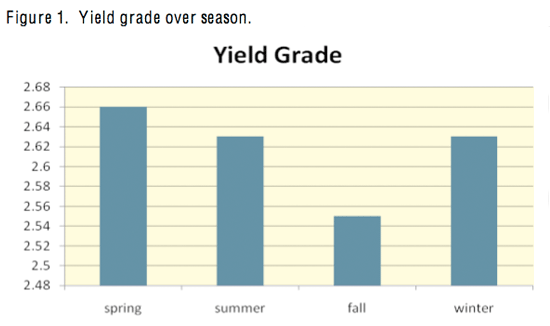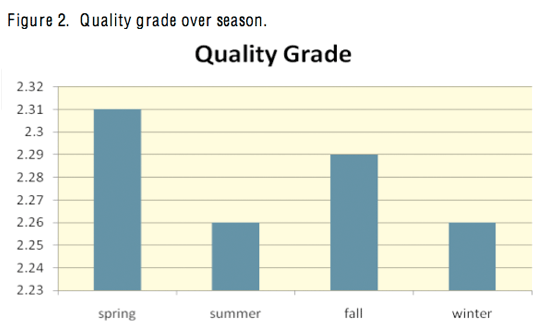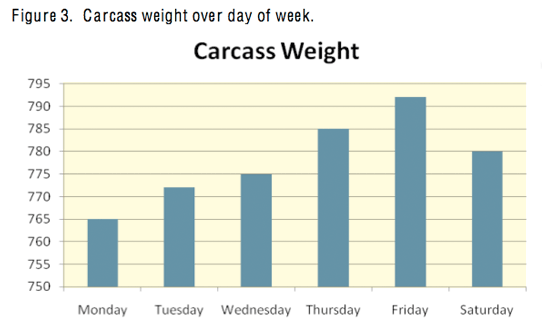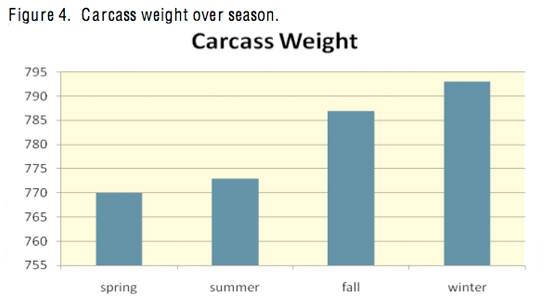



A Summary Of Iowa Cattle Market Data
Commodity markets and trends go hand in hand however there are some trends that repeat themselves weekly due to normal business at the feedyard and the packing plant, write Garland Dahlke, extension programme specialist and Daryl Strohbehn, professor emeritus of Animal Science, at Iowa Beef Centre.Summary and Implications
The effect of weekly routines was observed in resulting carcass yield grades, quality grade and hot carcass weights. How these results should direct the marketing of cattle is up to the reader, but never the less the results are interesting and may change the value of some animals depending on the day they were processed.
Introduction
Masses of data are collected daily from packing plants on the cattle that are processed. These data can reveal not only the value of the carcass but process consistency. This summary looked at weekly routines at the macro level and their impact causing trends in the measure of three key items from which the beef carcass is valued, namely the carcass yield grade (YG), quality grade (QG) and hot carcass weight (CW).
Material and Methods
Data from over 400,000 Iowa finished cattle comprising 2916 independent market lots processed in a large scale Nebraska packing plant were collected and summarized using a Proc Mixed model with weekday, season effects removed. The measured items of YG, QG and CW from which beef is priced were observed in terms of weekly trends. A summary of the data collected from which the trends were observed is provided in Tables 1, 2 and 3. A small number of lots were processed on Sunday. These groups of cattle may have actually been Sunday night runs as a lead off into Monday or carry over from Saturday since Sunday is not typically a day of production. Because of the uncertainty these Sunday Lots are not part of the analysis.

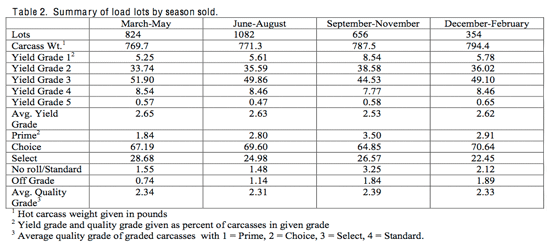
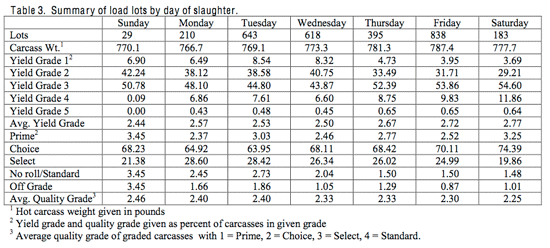
Results and Discussion
There are a number of items such as gender, animal age, rations, implant strategies and environment that can influence YG, QG, and CW. However, since these data were not made available in this set it is will be assumed that these effects will be factored out in the final evaluation due to the large number of marketing groups evaluated.
The effect of the week day cattle were processed is known and was analyzed in terms of the effect this day may have on YG, QG and CW outcome. Before providing the summary, the impact of season and the impact of CW were examined and found to have a strong influence on the YG and QG as shown in Figures 1and 2. Tables (4 and 5) provide documentation that there are seasonal effects as well. This effect of season may be due to climate and may also be due to age of the calf when placed on feed. The effect of CW is also considered since Figure 3 depicts a trend that Table 6 shows of significance where a trend of marketing heavier and probably more finished cattle occurs later in the week.
The correlation between YG and CW was 0.72, indicating fatter cattle are associated with heavier carcass weights in this data set and a correlation of -0.69 between QG and CW, indicating higher marbling cattle are associated with heavier cattle. Why this phenomenon of heavier cattle appearing later in the week may be due to a business practice of packing plants to contract a higher percent of cattle for processing earlier in the week while leaving some space later in the week for “open market” cattle to enter if plant capacity and demand allow. This reason is only speculation, but the weight trend is real.
Considering YG after the carcass weight influence is removed, the data in and Table 8 reveal day to day differences on average YG observed in each market lot. A trend appears where cattle processed later in the week tend toward higher USDA YG scores (more fat relative to lean) than those taken earlier in the week.
Quality Grades, on the other hand, tend to be more favorable for carcasses graded later in the week as shown in Table 9. The effect of day on QG does not seem to be as pronounced as it does on YG.
